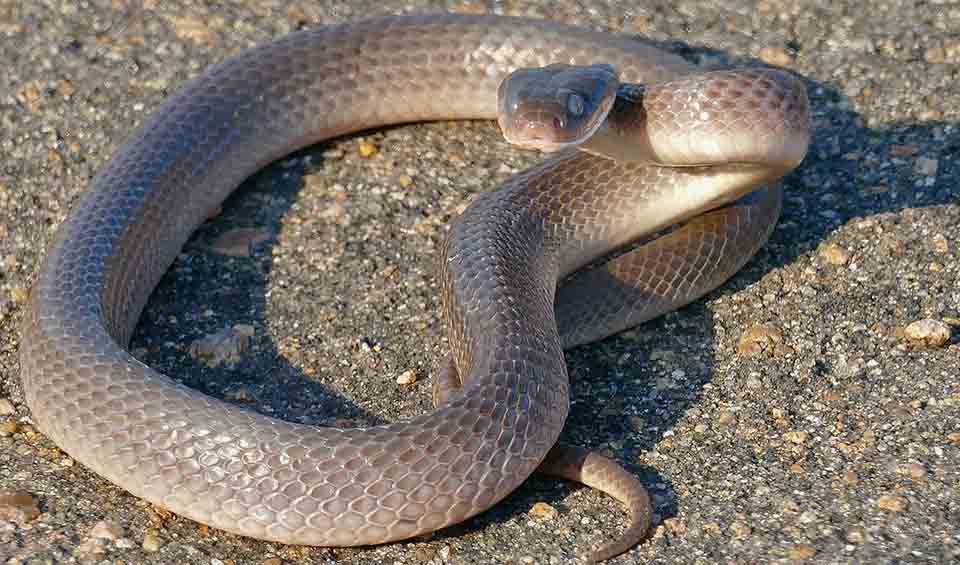It gets its name from the distinctive bright red, orange, or sometimes yellow markings on its upper lip and throat, which stand out vividly against its otherwise dark body. Sleek, smooth-scaled, and shy, this snake is often seen after rains or at dusk, when it emerges from its hiding spots to hunt. Although it looks striking and is sometimes mistaken for a venomous species, it is completely harmless to humans.
The red-lipped snake has a slim, graceful body and a slightly pointed head with large, round eyes—perfectly suited for its nocturnal lifestyle. Its coloring is typically dark gray to nearly black, sometimes with a faint, lighter stripe along the body, and its belly is pale or cream-colored. The bright lip markings are most vivid in younger individuals and males, while older adults may have more faded or dull coloration.
One of the most interesting things about the red-lipped snake is its specialized diet. It primarily feeds on frogs and toads, using its rear fangs and mild venom to subdue slippery prey. Unlike front-fanged snakes, the red-lipped snake has fangs located further back in its mouth, so it must chew a bit to work the venom in. This makes its bite harmless to humans, but quite effective on its preferred amphibian prey. Because of its reliance on frogs, the red-lipped snake is often most active in wet weather or near moist habitats like streams, wetlands, and gardens.
Despite its name and flashy markings, the red-lipped snake is non-aggressive and shy. When threatened, it may flatten its head, puff up its body, or even fake a strike with its mouth closed. These behaviors are all for show—it rarely bites unless physically handled or cornered. In fact, many people are surprised at how calm and docile it is when left alone.
Distribution
 Benin
Benin Botswana
Botswana Burkina Faso
Burkina Faso Burundi
Burundi Cameroon
Cameroon Central Af. Rep.
Central Af. Rep. Chad
Chad Congo-Brazzaville
Congo-Brazzaville Côte D’ivoire
Côte D’ivoire Eritrea
Eritrea Ethiopia
Ethiopia Gabon
Gabon Gambia
Gambia Ghana
Ghana Guinea-Bissau
Guinea-Bissau Guinea
Guinea Kenya
Kenya Liberia
Liberia Mali
Mali Niger
Niger Nigeria
Nigeria Rwanda
Rwanda Senegal
Senegal Sierra Leone
Sierra Leone Somalia
Somalia South Africa
South Africa South Sudan
South Sudan Sudan
Sudan Tanzania
Tanzania Togo
Togo Uganda
UgandaAnything we've missed?
Help us improve this page by suggesting edits. Glory never dies!
Suggest an editGet to know me
Terrestrial / Aquatic
Altricial / Precocial
Polygamous / Monogamous
Dimorphic (size) / Monomorphic
Active: Diurnal / Nocturnal
Social behavior: Solitary / Pack / Herd
Diet: Carnivore / Herbivore / Omnivore / Piscivorous / Insectivore
Migratory: Yes / No
Domesticated: Yes / No
Dangerous: Yes / No




